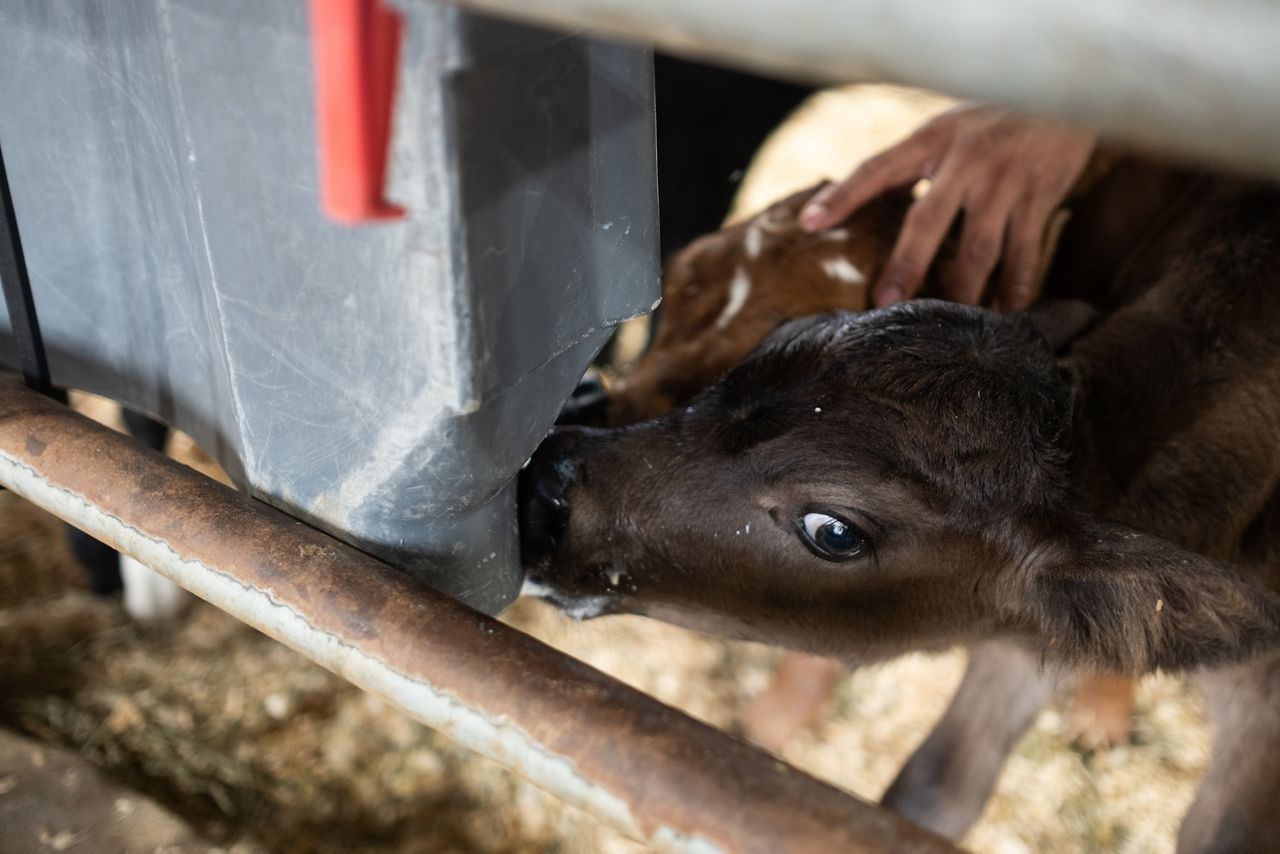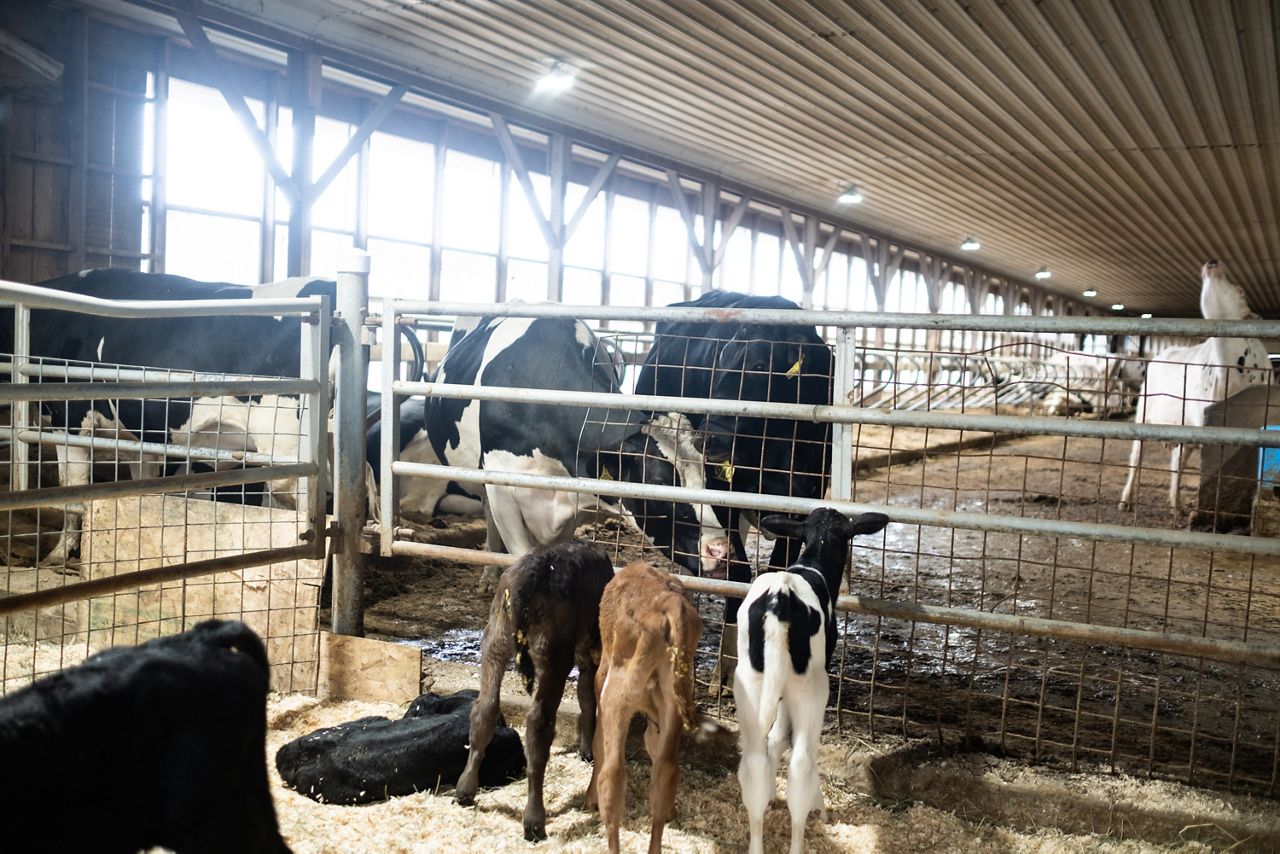With fewer beef cattle in the U.S., dairy farmers in New York are capitalizing on the opportunity by cross-breeding beef cattle with dairy cows, increasing their income from the calves — and offering some benefits for consumers.
Bruce Gibson, an owner of Locust Hill Dairy in Lacona, Oswego County, said prices for cross-bred calves increased in recent years.
“There was a time when Holstein bull calves were so devoid of value that farms would send some calves to sale and they would get a bill because they were so worthless,” Gibson said.

In 2018, Locust Hill Dairy shifted to breeding largely beef sires to Holstein cows and at the time were getting between $150 and $180 per calf, but now with the U.S. beef herd short 3 million animals, cross-bred calf prices have skyrocketed.
“We had one this week that was $1,100 for a three-day-old calf, so the beef on dairy went from kind of a nice thing three years ago to a significant diversification in our dairy business,” Gibson said.
The boost has helped some farms in New York at a time when the state is seeing a steep loss in dairies.
Dairy farmers have said that while all input costs increased, the price of milk has stayed the same, and according to a report from the American Farm Bureau Federation, income from dairy and milk products is expected to be down $900 million in 2024.
Locust Hill Dairy, which milks about 4,800 cows, works with a genetics company to purchase beef semen that has specific genes meant to be crossed with dairy cattle.

The difference between a beef cow and a dairy cow really comes down to how they use their energy.
“The milk bearing cows, their whole body and construct is geared around milk production so the energy they consume is converted to milk and not to muscle. On the beef side, we’ve evolved those cattle to put on muscle and hopefully quicky to be efficient with feed,” Gibson said.
But these differences impact how the meat will appear to consumers.
Betsy Hicks, a dairy specialist with Cornell Cooperative Extension, said from the consumers’ perspective, the meat from the beef dairy cross cattle will have improved appearance over meat from dairy cattle.

“What we found was with this beef type cross, in the meat case, the meat will retain its color better, longer so it will stay that nice vibrant meat color that we like. It won’t tend to oxidize as quickly,” Hicks said.
Meat that has oxidized is still good to eat, it just doesn’t look as pretty, she said. However, purebred beef stays redder longer than the beef from dairy cows.
But the cross between the two animals leads to other benefits for consumers.

“The thing with the beef on dairy is the Holstein brings a lot of marbling, but a Holstein steak might have a weird shape,” Hicks said. "When we cross it with Angus, we really liked the flavor, tenderness and the shape was better, and so we’re matching really good marbling and the right shape when we bring the two breeds together,” Hicks said.
Most of the beef and dairy crossed calves are sent to the Midwest and Texas to be raised on cattle ranches, but Hicks said she would like to see that change.
“I believe there is a huge opportunity for us to raise them here and keep them in the Northeast. We just have to figure out how to do it profitably,” she said.










